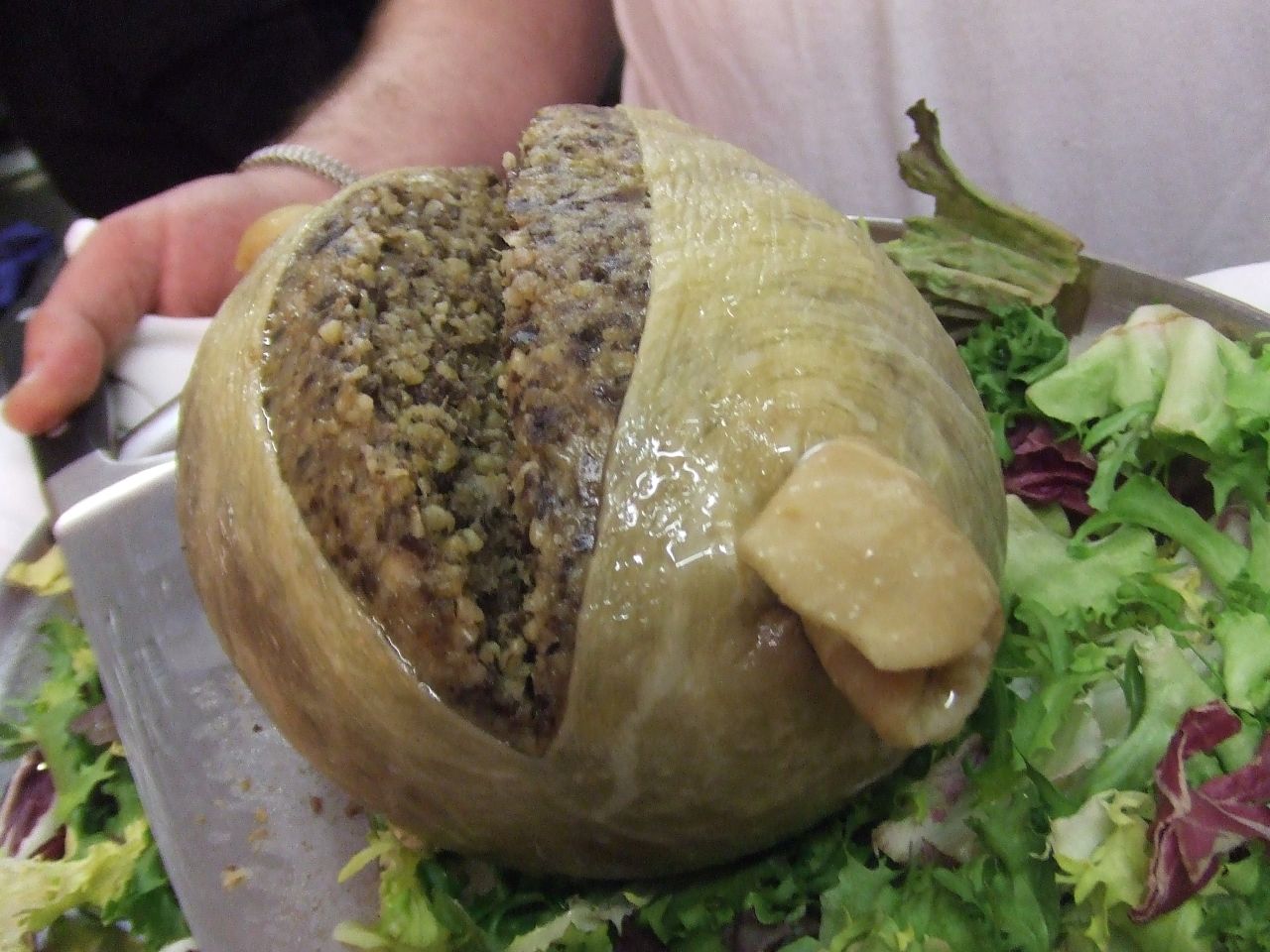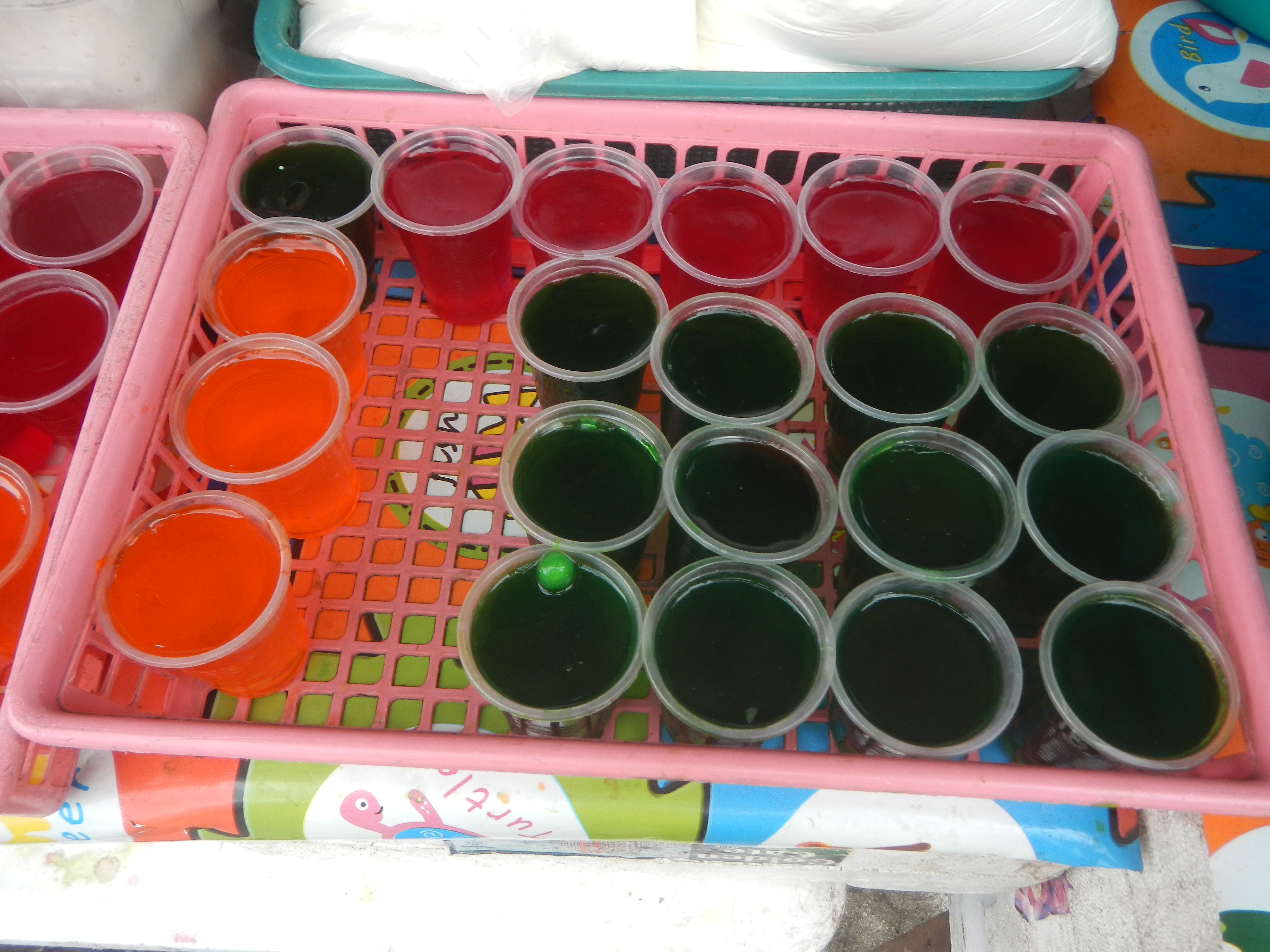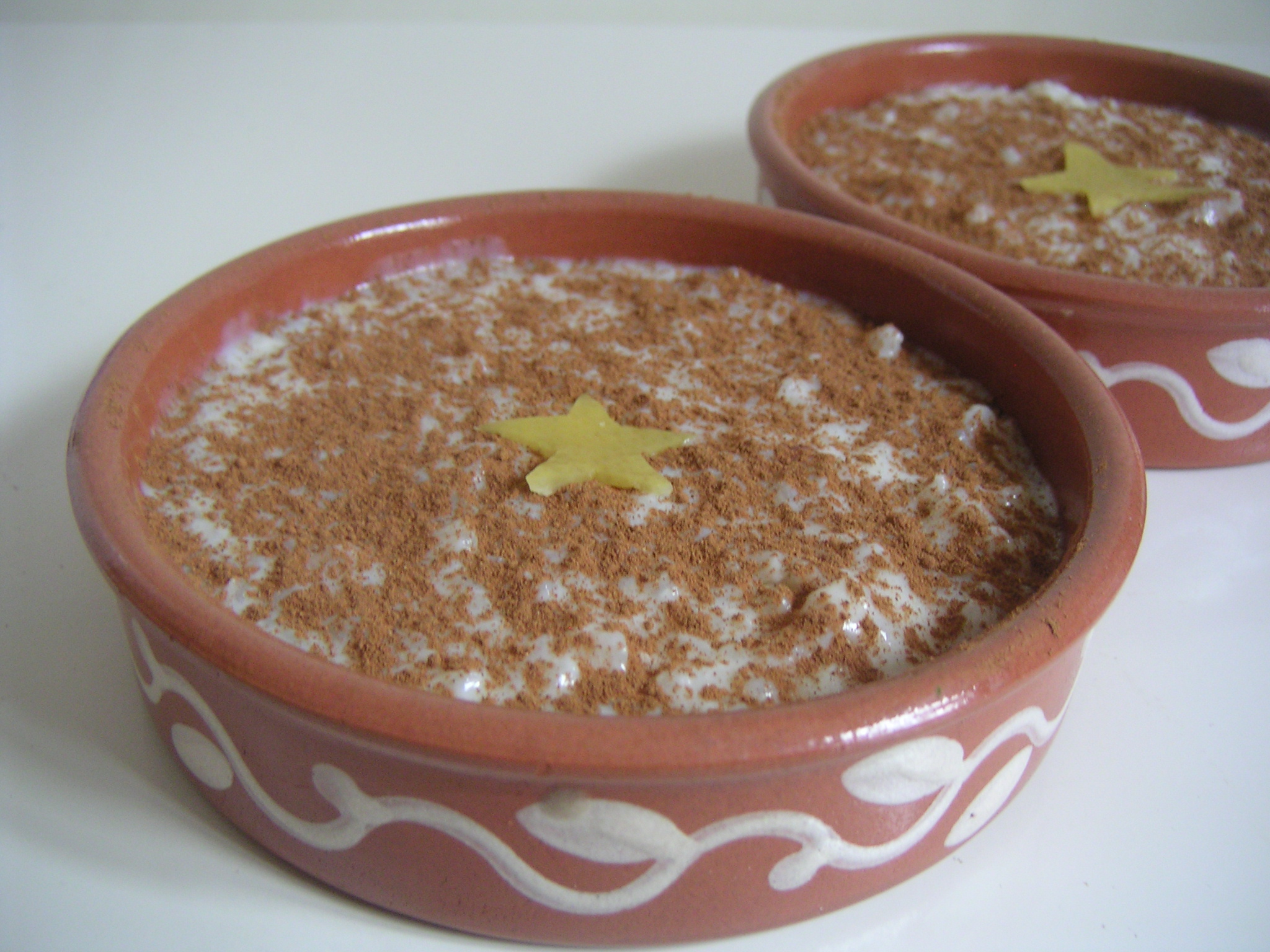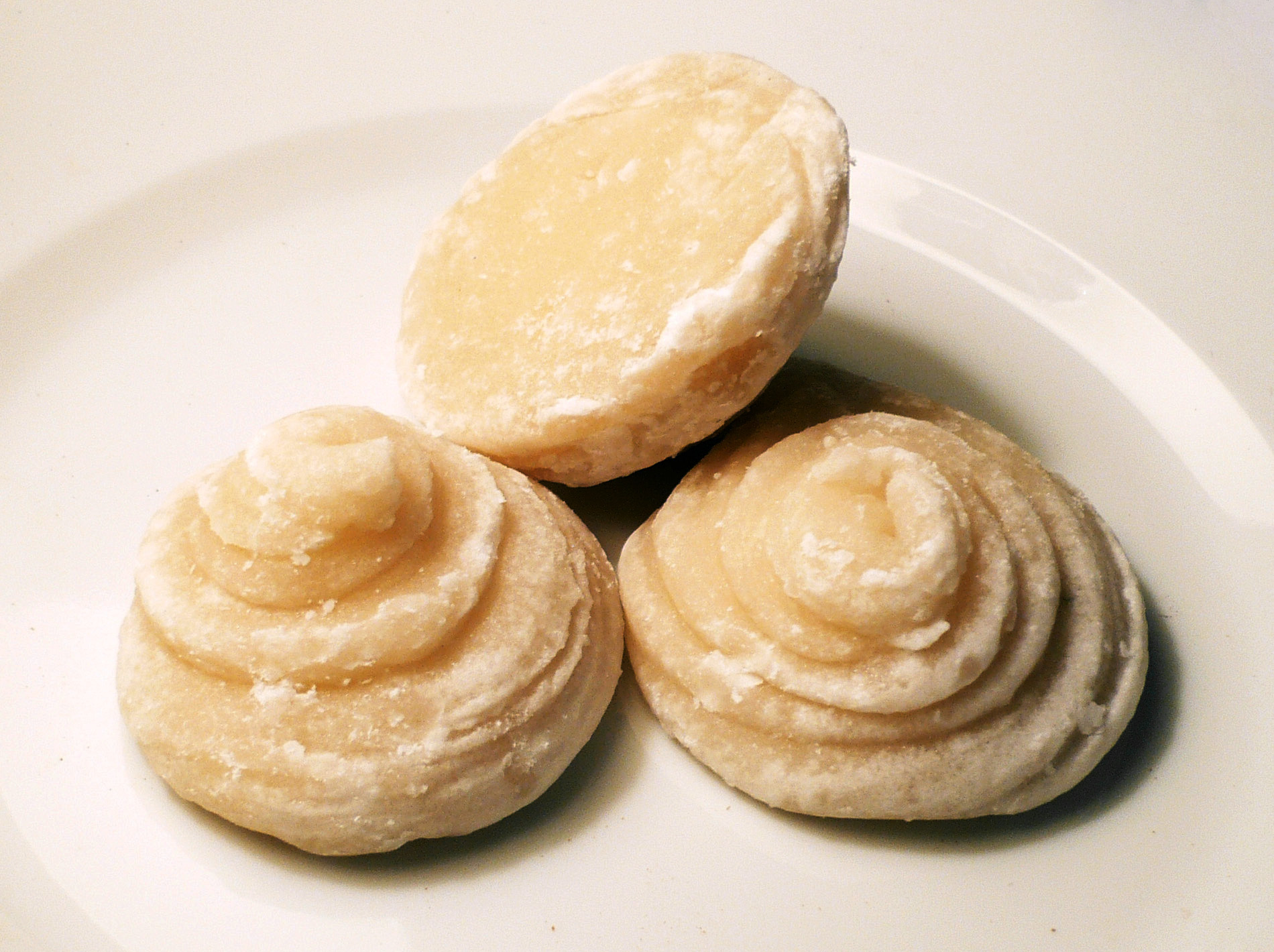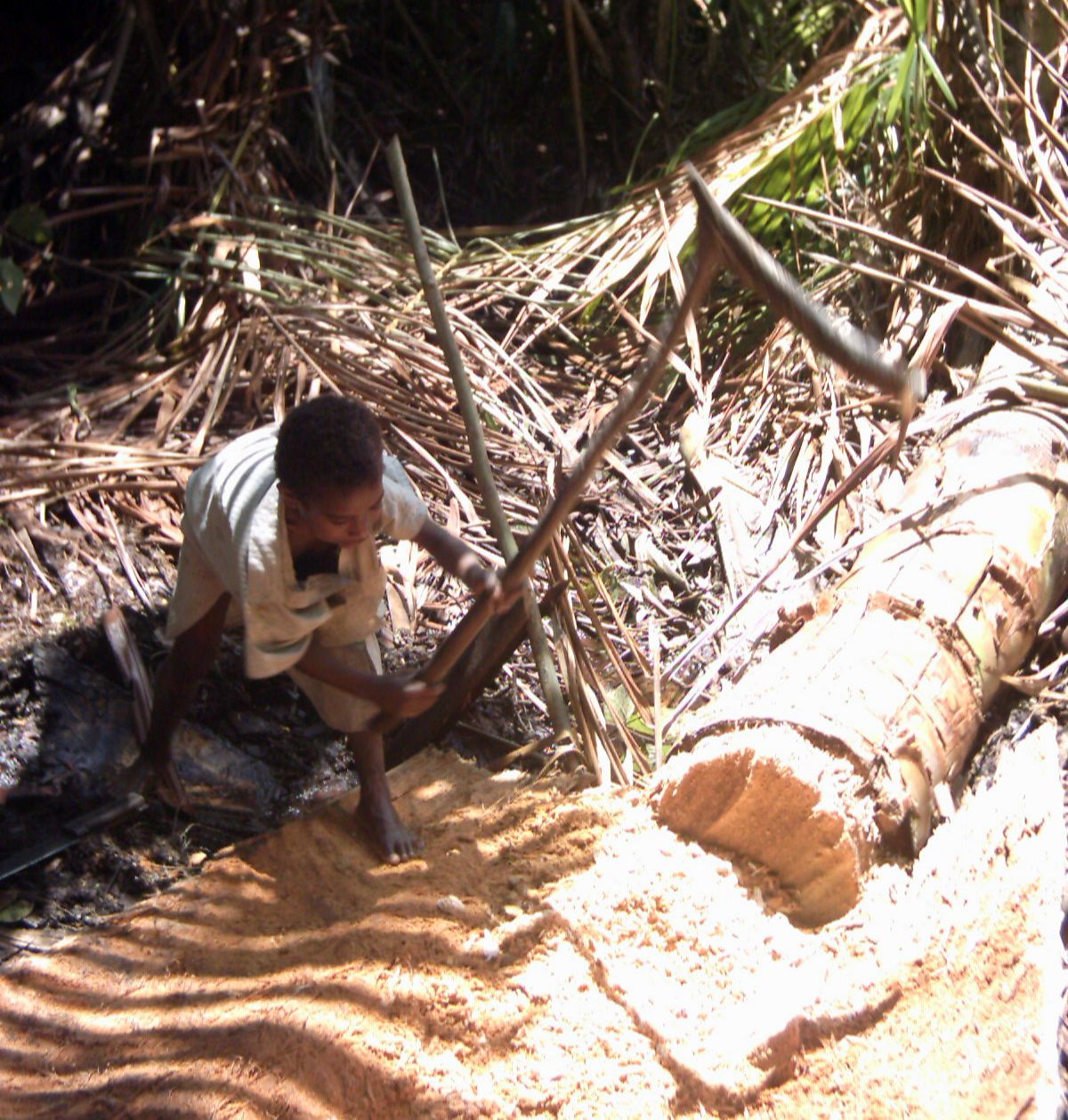|
Sago Pudding
Sago pudding is a sweet pudding made by combining sago pearls with either water or milk and adding sugar and sometimes additional flavourings. It is made in many cultures with varying styles, and may be produced in a variety of ways. Southeast Asia, especially Indonesia and Malaysia, produces the majority of sago. In Malaysia, ''sago gula melaka'' is a sago pudding made by boiling pearl sago in water and serving it with syrup of palm sugar (''gula melaka'') and coconut milk. In Myanmar, thagu byin ( Burmese: သာဂူပြင်) is a sago pudding made with sago, coconut milk and condensed milk. Sago pudding is also a popular delicacy in New Guinea. In the UK, "sago pudding" is generally made by boiling pearl sago and sugar in milk until the sago pearls become clear, and thickening it with eggs or cornflour. Depending on the proportions used it can range from a runny consistency to fairly thick, and can be similar to tapioca pudding or rice pudding Rice pudding is a d ... [...More Info...] [...Related Items...] OR: [Wikipedia] [Google] [Baidu] |
Pudding
Pudding is a type of food which can either be a dessert served after the main meal or a Savoury (dish), savoury (salty or sweet, and spicy) dish, served as part of the main meal. In the United States, ''pudding'' means a sweet, milk-based dessert similar in consistency to egg-based custards, Bird's Custard, instant custards or a mousse, often commercially set using cornstarch, gelatin or similar coagulating agent. The modern American meaning of pudding as dessert has evolved from the original almost exclusive use of the term to describe savoury dishes, specifically those created using a process similar to that used for sausages, in which meat and other ingredients in mostly liquid form are encased and then steamed or boiled to set the contents. In the United Kingdom, Republic of Ireland, Ireland and some Commonwealth of Nations, Commonwealth countries, the word ''pudding'' is used to describe sweet and Savoury (dish), savoury dishes. Savoury puddings include Yorkshire pudding ... [...More Info...] [...Related Items...] OR: [Wikipedia] [Google] [Baidu] |
Coconut Milk
Coconut milk is a plant milk extracted from the grated pulp of mature coconuts. The opacity and rich taste of the milky-white liquid are due to its high oil content, most of which is saturated fat. Coconut milk is a traditional food ingredient used in Southeast Asia, Oceania, South Asia, and East Africa. It is also used for cooking in the Caribbean, Central America, northern parts of South America and West Africa, where coconuts were introduced during the colonial era. Coconut milk is differentiated into subtypes based on fat content. They can be generalized into coconut cream (or thick coconut milk) with the highest amount of fat; coconut milk (or thin coconut milk) with a maximum of around 20% fat; and coconut skim milk with negligible amounts of fat. This terminology is not always followed in commercial coconut milk sold in Western countries. Coconut milk can also be used to produce milk substitutes (differentiated as "coconut milk beverages"). These products are not ... [...More Info...] [...Related Items...] OR: [Wikipedia] [Google] [Baidu] |
Gulaman
''Gulaman'', in Filipino cuisine, is a bar, or powdered form, of dried agar or carrageenan extracted from edible seaweed used to make jelly-like desserts. In common usage, it also usually refers to the refreshment '' sago't gulaman'', sometimes referred to as '' samalamig'', sold at roadside stalls and vendors. History '' Gracilaria'', which produces agar, is known as , , , or in Tagalog and in other languages in the northern Philippines. It has been harvested and used as food for centuries, eaten both fresh or sun-dried and turned into jellies. The earliest historical attestation is from the '' Vocabulario de la lengua tagala'' (1754) by the Jesuit priests Juan de Noceda and Pedro de Sanlucar, where ''golaman'' or ''gulaman'' was defined as ''"una yerva, de que se haze conserva a modo de Halea, naze en la mar"'' (modern Spanish orthography: “''una hierva, de que se hace conserva a modo de jalea, nace en la mar''”; “an herb, from which a jam-like preserve is made, g ... [...More Info...] [...Related Items...] OR: [Wikipedia] [Google] [Baidu] |
Bilo-bilo
Pinaltok or Bilo-bilo is a Filipino dessert made of small glutinous balls (sweet sticky rice flour rounded up by adding water) in coconut milk and sugar. Then jackfruit, saba bananas, sweet potatoes, taro, and tapioca pearls or sago (regular and mini size pearls) are added. Bilo-bilo's origin is in Luzon. There are different recipe versions depending on what region in the Philippines it is from. Some recipes call for young coconut meat and some call for adding pandan leaves. This is usually and traditionally eaten hot while others prefer eating them cold after refrigeration. See also * '' Halo-halo'' *Sago pudding Sago pudding is a sweet pudding made by combining sago pearls with either water or milk and adding sugar and sometimes additional flavourings. It is made in many cultures with varying styles, and may be produced in a variety of ways. Southeast Asi ... References Philippine desserts Glutinous rice dishes {{dessert-stub ... [...More Info...] [...Related Items...] OR: [Wikipedia] [Google] [Baidu] |
Rice Pudding
Rice pudding is a dish made from rice mixed with water or milk and commonly other ingredients such as sweeteners, spices, flavourings and sometimes eggs. Variants are used for either desserts or dinners. When used as a dessert, it is commonly combined with a sweetener such as sugar. Such desserts are found on many continents, especially Asia, where rice is a staple. Some variants are thickened only with the rice starch, while others include eggs, making them a kind of custard. Rice pudding around the world Rice puddings are found in nearly every area of the world. Recipes can greatly vary even within a single country. The dessert can be boiled or baked. Different types of pudding vary depending on preparation methods and the selected ingredients. The following ingredients are usually found in rice puddings: * rice; white rice (usually short-grain, but can also be long-grain, broken rice, basmati, or jasmine rice), brown rice, or black rice * milk (whole milk, plant milk, cream ... [...More Info...] [...Related Items...] OR: [Wikipedia] [Google] [Baidu] |
Tapioca Pudding
Tapioca pudding is a sweet pudding made with tapioca and either milk or cream. Coconut milk is also used in cases in which the flavor is preferred or in areas in which it is a commonplace ingredient for cooking. It is made in many cultures with equally varying styles and may be produced in a variety of ways.It's one of the popular desserts or "Tong Shui" of Chinese culture. It is believed to have derived from the Mayan culture and was brought to China in the late 17th century. Its consistency ranges from thin (runny), thick, to firm enough to eat with a fork. Varieties The pudding can be made from scratch using tapioca in a variety of forms: flakes, coarse meal, sticks, and pearls. Many commercial packaged mixes are also available. Ingredients served alongside and put into tapioca pudding have varied over time. An American style of tapioca pudding in the 19th century was known to contain no sugar within the pudding itself but would be served with sugar and cream on the side. ... [...More Info...] [...Related Items...] OR: [Wikipedia] [Google] [Baidu] |
New Guinea
New Guinea (; Hiri Motu: ''Niu Gini''; , fossilized , also known as Papua or historically ) is the List of islands by area, world's second-largest island, with an area of . Located in Melanesia in the southwestern Pacific Ocean, the island is separated from Mainland Australia, Australia by the wide Torres Strait, though both landmasses lie on the same continental shelf, and were united during episodes of low sea level in the Pleistocene glaciations as the combined landmass of Sahul. Numerous smaller islands are located to the west and east. The island's name was given by Spanish explorer Yñigo Ortiz de Retez during his maritime expedition of 1545 due to the perceived resemblance of the indigenous peoples of the island to those in the Guinea (region), African region of Guinea. The eastern half of the island is the major land mass of the nation of Papua New Guinea. The western half, known as Western New Guinea, forms a part of Indonesia and is organized as the provinces of Pap ... [...More Info...] [...Related Items...] OR: [Wikipedia] [Google] [Baidu] |
Burmese Language
Burmese (; ) is a Tibeto-Burman languages, Tibeto-Burman language spoken in Myanmar, where it is the official language, lingua franca, and the native language of the Bamar people, Bamar, the country's largest ethnic group. Burmese dialects are also spoken by the indigenous tribes in Bangladesh's Chittagong Hill Tracts, India's Mizoram, Manipur, Tripura states and the Burmese diaspora. The Constitution of Myanmar officially refers to it as the Myanmar language in English, though most English speakers continue to refer to the language as ''Burmese'', after ''Burma''—a name with co-official status until 1989 (see Names of Myanmar). Burmese is the most widely-spoken language in the country, where it serves as the lingua franca. In 2019, Burmese was spoken by 42.9 million people globally, including by 32.9 million speakers as a first language, and an additional 10 million speakers as a second language. A 2023 World Bank survey found that 80% of the country's population speaks Burmese ... [...More Info...] [...Related Items...] OR: [Wikipedia] [Google] [Baidu] |
Palm Sugar
Palm sugar is a sweetener derived from any variety of palm tree. Palm sugar may be qualified by the type of palm, as in coconut palm sugar. While sugars from different palms may have slightly different compositions, all are processed similarly and can be used interchangeably. Types The predominant sources of palm sugar are the Palmyra, date, nipa, aren, and coconut palms. The Palmyra palm (''Borassus'' spp.) is grown in Africa, Asia, and New Guinea. The tree has many uses, such as thatching, hatmaking, timber, a writing material, and in food products. Palm sugar is produced from sap (toddy) from the flowers. There are two species of date palm that produce palm sugar: ''Phoenix dactylifera'' and '' P. sylvestris''. ''P. dactylifera'' is common in the Mediterranean and Middle East, while ''P. sylvestris'' is native to Asia, mainly Pakistan and India. Date palms are cultivated mainly for dates and palm sugar is made from the tree's sap. The nipa palm ('' Nypa fru ... [...More Info...] [...Related Items...] OR: [Wikipedia] [Google] [Baidu] |
Sago
Sago () is a starch extracted from the pith, or spongy core tissue, of various tropical palm stems, especially those of ''Metroxylon sagu''. It is a major staple food for the lowland peoples of New Guinea and the Maluku Islands, where it is called ''saksak'', ''rabia'' and ''sagu''. The largest supply of sago comes from Melanesia region, particularly Eastern Indonesia. Large quantities of sago are sent to Europe and North America for cooking purposes. It is traditionally cooked and eaten in various forms, such as rolled into balls, mixed with boiling water to form a glue-like paste (Papeda (food), papeda), or as a pancake. Sago is often produced commercially in the form of "pearls" (small rounded starch aggregates, partly Starch gelatinization, gelatinized by heating). Sago pearls can be boiled with water or milk and sugar to make a sweet sago pudding. Sago pearls are similar in appearance to the pearled starches of other origin, e.g. cassava starch (tapioca) and potato starch ... [...More Info...] [...Related Items...] OR: [Wikipedia] [Google] [Baidu] |
Malaysia
Malaysia is a country in Southeast Asia. Featuring the Tanjung Piai, southernmost point of continental Eurasia, it is a federation, federal constitutional monarchy consisting of States and federal territories of Malaysia, 13 states and three federal territories, separated by the South China Sea into two regions: Peninsular Malaysia on the Mainland Southeast Asia, Indochinese Peninsula and East Malaysia on the island of Borneo. Peninsular Malaysia shares land and maritime Malaysia–Thailand border, borders with Thailand, as well as maritime borders with Singapore, Vietnam, and Indonesia; East Malaysia shares land borders with Brunei and Indonesia, and a maritime border with the Philippines and Vietnam. Kuala Lumpur is the country's national capital, List of cities and towns in Malaysia by population, largest city, and the seat of the Parliament of Malaysia, legislative branch of the Government of Malaysia, federal government, while Putrajaya is the federal administrative capi ... [...More Info...] [...Related Items...] OR: [Wikipedia] [Google] [Baidu] |
Sago
Sago () is a starch extracted from the pith, or spongy core tissue, of various tropical palm stems, especially those of ''Metroxylon sagu''. It is a major staple food for the lowland peoples of New Guinea and the Maluku Islands, where it is called ''saksak'', ''rabia'' and ''sagu''. The largest supply of sago comes from Melanesia region, particularly Eastern Indonesia. Large quantities of sago are sent to Europe and North America for cooking purposes. It is traditionally cooked and eaten in various forms, such as rolled into balls, mixed with boiling water to form a glue-like paste (Papeda (food), papeda), or as a pancake. Sago is often produced commercially in the form of "pearls" (small rounded starch aggregates, partly Starch gelatinization, gelatinized by heating). Sago pearls can be boiled with water or milk and sugar to make a sweet sago pudding. Sago pearls are similar in appearance to the pearled starches of other origin, e.g. cassava starch (tapioca) and potato starch ... [...More Info...] [...Related Items...] OR: [Wikipedia] [Google] [Baidu] |
